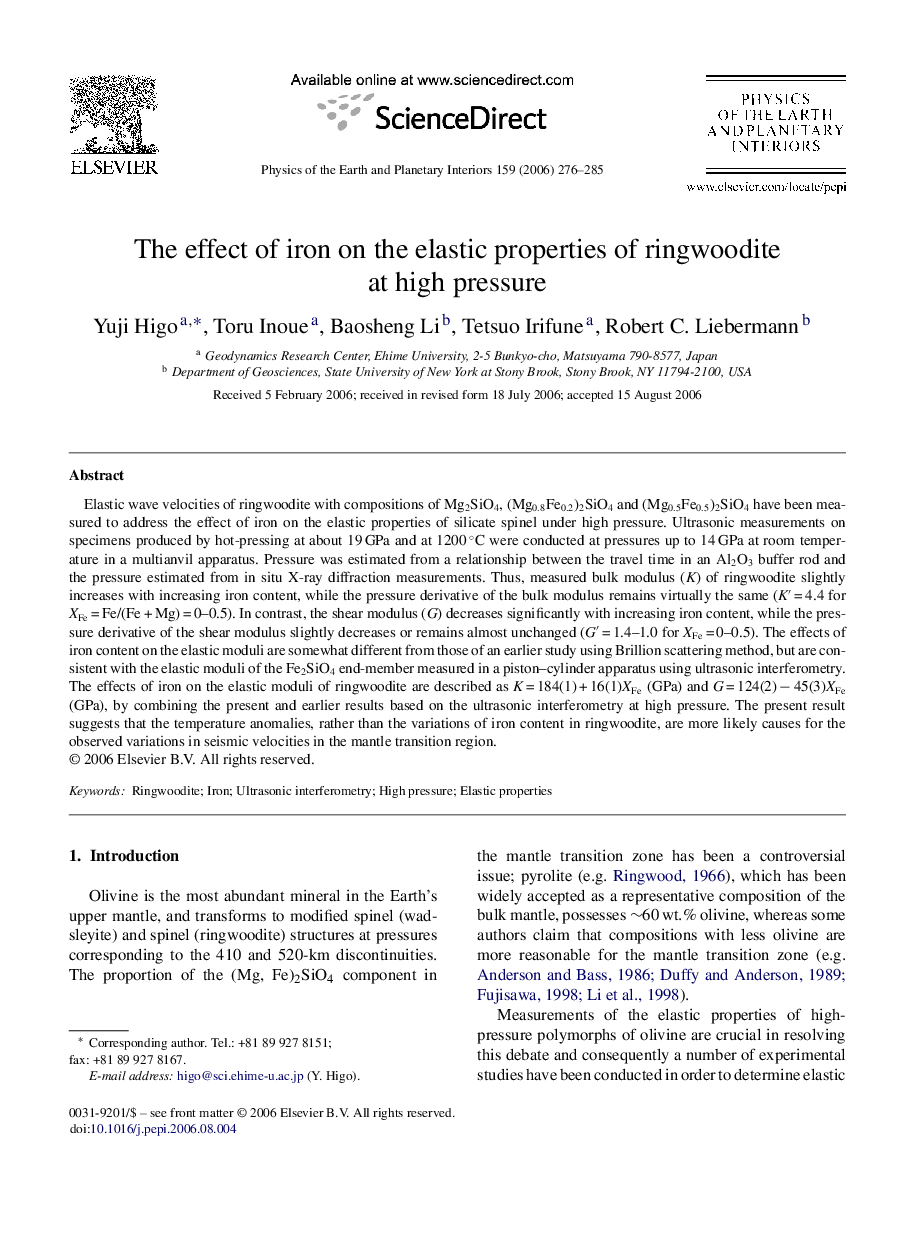| Article ID | Journal | Published Year | Pages | File Type |
|---|---|---|---|---|
| 4742575 | Physics of the Earth and Planetary Interiors | 2006 | 10 Pages |
Elastic wave velocities of ringwoodite with compositions of Mg2SiO4, (Mg0.8Fe0.2)2SiO4 and (Mg0.5Fe0.5)2SiO4 have been measured to address the effect of iron on the elastic properties of silicate spinel under high pressure. Ultrasonic measurements on specimens produced by hot-pressing at about 19 GPa and at 1200 °C were conducted at pressures up to 14 GPa at room temperature in a multianvil apparatus. Pressure was estimated from a relationship between the travel time in an Al2O3 buffer rod and the pressure estimated from in situ X-ray diffraction measurements. Thus, measured bulk modulus (K) of ringwoodite slightly increases with increasing iron content, while the pressure derivative of the bulk modulus remains virtually the same (K′ = 4.4 for XFe = Fe/(Fe + Mg) = 0–0.5). In contrast, the shear modulus (G) decreases significantly with increasing iron content, while the pressure derivative of the shear modulus slightly decreases or remains almost unchanged (G′ = 1.4–1.0 for XFe = 0–0.5). The effects of iron content on the elastic moduli are somewhat different from those of an earlier study using Brillion scattering method, but are consistent with the elastic moduli of the Fe2SiO4 end-member measured in a piston–cylinder apparatus using ultrasonic interferometry. The effects of iron on the elastic moduli of ringwoodite are described as K = 184(1) + 16(1)XFe (GPa) and G = 124(2) − 45(3)XFe (GPa), by combining the present and earlier results based on the ultrasonic interferometry at high pressure. The present result suggests that the temperature anomalies, rather than the variations of iron content in ringwoodite, are more likely causes for the observed variations in seismic velocities in the mantle transition region.
